
The Narratology Trap
📅 2023-05-09
Whelp, so much for daily posts. Day 5 since the last update, but to be completely honest, this has mostly been due to not wanting to give away aspects that I’m working on until they’re complete. And perhaps that goes against the nature of this sort of development blog, but I’m also building a game that I hope will be played, so I don’t know if keeping some of my cards close to my chest is that much of a misgiving. I have, however, had an issue over the last five days that has left me feeling a little low in terms of direction, and it wasn’t until this morning I realized what was happening. So if you will forgive the following ramblings, I promise it has a point.
Anyone who knows me, knows I rail against the “Narratology” machine on a regular basis while playing games. Especially in the horror genre where we spend most of our time - since a lot of games that fall into the modern first person horror genre seem to go hand in hand with amusement park “horror house simulators”. Essentially, “Walking Sims” punctuated by moments of fear. Now this isn’t inherently a bad thing, of course, and they prove quite successful with players of all sorts, but I can’t help feel annoyed by these games for a similar reason that I feel when playing modern AAA story driven games like God of War, or The Last Of Us, and I’m curious as to why that is.

There are a lot of games of course, that break the horror house simulator mold, PuppetCombo, Chilla’s Art, as well as some of my recent favorites by Stanislaw Truchowski (Suite 776) and Mike Klubnika (Carbon Steel, The Other Side). But what makes those games different to the rest? Well, it depends of course on how you slice it, since each of those creators approach their design differently. But what my aim is here, is to parse out some of what it is that distinguishes those games from many of the other indie horror games we play on stream, through the lens of Narratology versus Ludology.
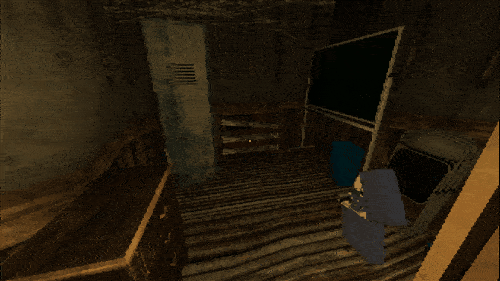
The line between Narratology and Ludology is of course a debated one, and some wish to ditch the concept entirely. Isn’t Mario, after all, trying to save a princess? Isn’t that, a STORY?! A single path progression from point A to point B? And it can be at first a somewhat convincing argument, but obviously it betrays a misunderstanding of the definitions at work. Mario is, at it’s core, a tight mechanically rich platformer, and it’s focus is on that platforming itself, the moment to moment jumping and dodging, exploring and collecting. It is mechanically focused, and the narrative is really just a bookend, not its central drive. The story of a Mario game is how you reached the end of its levels, not whether the princess was saved. Did you get a unique power-up that allowed you to blast through the enemies? Did you die to the same spiked shell over and over? These personal stories is where Ludology shines.
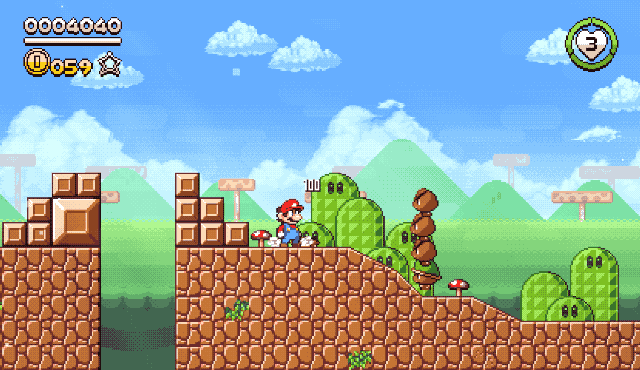
But then, what of the games I often rail against in the AAA? Uncharted, God of War, The Last Of Us, Tomb Raider Reboot? Surely, while there is a single narrative in those games, there is a bunch of mechanical complexity that allows the player to tell their own story in the ‘between’ bits? Did Joel duck or take a bullet to the face? Did Joel find the resources to make a medkit while on the verge of death, or succumb to the great beyond? These are personal player driven stories, aren’t they?
I think it’s here we need to address design philosophy and intention. The Narratology/Ludology definition’s, for me at least, are partially defined by design focus and intent. Is this game being made with a focus on narrative, or is the focus on mechanical agency - the rules and systems - that allow the player to tell their own story, in a sense? Does it feel like you’re on a cinematic journey with a defined end goal, with some busy work in between, or is it the busy work itself that makes up the focus of the experience.
With Mario, the answer is that the focus is the mechanics. For Last of Us, I think it would be safe to say, that it’s the Narrative -the story of Ellie and Joel. Not on how the player gets from point A to B, but the actual points themselves - the cutscenes that come together to tell a single story that is entirely devoid of gameplay. This is, in my opinion, why it made such a simple adaptation into a successful TV series. It wasn’t a difficult ask to cut the gameplay out, the gameplay was incidental anyway.
As Ian Bogost remarked in 2017 regarding ‘What Remains of Edith Finch’ - “Why does this story need to be told as a video game? The whole way through, I found myself wondering why I couldn’t experience Edith Finch as a traditional time-based narrative. Real-time rendering tools are as good as pre-rendered computer graphics these days, and little would have been compromised visually had the game been an animated film. Or even a live-action film. After all, most films are shot with green screens, the details added in postproduction. The story is entirely linear, and interacting with the environment only gets in the way, such as when a particularly dark hallway makes it unclear that the next scene is right around the corner.”
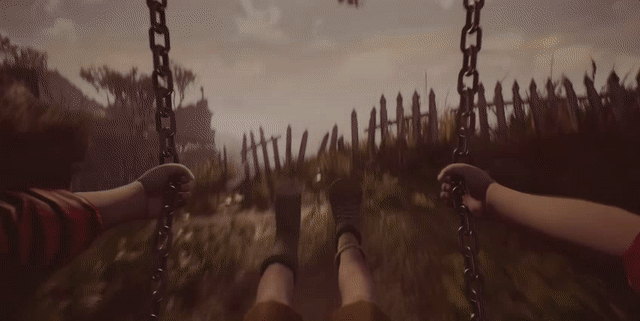
While a game like Last of Us, or Tomb Raider Reboot, have some complexity of interlocking systems, certainly more than most indie games - those systems are being used to enthuse the player to get from point A to point B in the story, not to give the player agency and freedom to tell their own story through the gameplay systems themselves. This is made very clear by the lack of agency the player has on the actual story itself as a whole, the decisions of Ellie and Joel, or Lara, cannot be changed regardless of how the game is played. The intent is to tell a story, not allow the player to tell their own story. This is obviously debatable, but for our intent is what I’m going with.
And so, when looking at our earlier mentioned indie games which we started with, when we look at design intent, or the meat and bones of the game itself, we find that those games that stand out in the horror genre, for me at least, are the ones that focus on systems and gameplay loops themselves, not the overarching story. With Klubnika’s games, while there is certainly a single path through them (with the exception of Infineural), the focus on a mechanical game loop, the rules and systems, make them firmly Ludological. There is undoubtedly a focus on the mechanics being the main engagement point for the player, which comes with interesting mechanical intersections and fail states. While the bookends are the same, the story being told differs depending on the choices being made mechanically by the player.
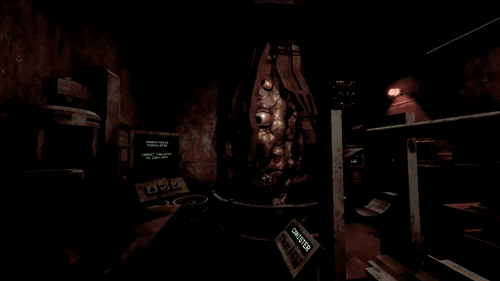
Thus, if Klubnika’s games were much more story driven, aka more happened during the non-gameplay moments, and the player felt the engagement was just a way to get to the next story chunk, then their game’s would become, in my opinion, more narratologically driven. But since there is an implied narrative, the game loop is able to stand on its own and shine, and engage the player for what it is, and thus we end up with a ludological game. The other games mentioned fall even more into this ludological category, since many have multiple endings, and a big part of defining the end point is how the game is played throughout, thus delivering on the true ludological experience.
But does this mean that if ‘The Last Of Us’ let the story take a back seat, the overall experience of the player would be one that felt more ludological? It’s hard to say what this would even mean. If I were redesigning The Last Of Us, player agency in how the story evolved would be the very first thing to be added. But if, like Klubnika, the story remained pre-defined, but was less of a focus, would the game become less narratological? If that is the case, a big part of this debate is actually “game feel” and balance, more than a firm classification into one category or the other.
Let’s take for a moment the Quantic Dream games. Yes, they’re clearly story driven games, the intent is very much in the story, and the mechanics serve the story, first and foremost, contextually changing when needed to allow the player to get from A to B. But the fact that you can also go from A to C, and A to D, and skip segments, change direction, lose characters, change the story entirely, etc, means that the story being told is very much player directed. Thus, while most would classify a Cage game as a narratological game, I think it’s debateable. It has the trappings of a narrative game, for sure, but could it be told with any other medium? Perhaps not. Not without some heavy interactive fuckery, ala Netflix’s Bandersnatch.
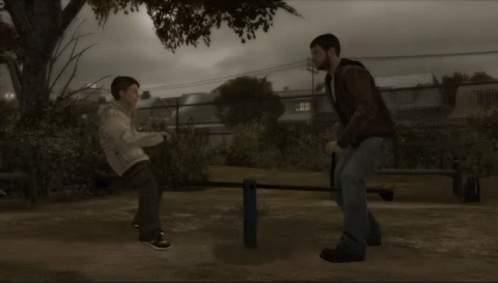
I would actually define a Cage game much less narratological than a game like ‘The Last of Us’, which tells the same overarching narrative regardless of what the player did in the in betweens, with it’s systems serving story, not the other way around.
So, if we’re nailing down some of this, we can say - at least for me - Ludology comes down to designer intention/focus, player agency, mechanical systems/game loops, and “game feel”, as nebulous as that is.
If we make those factors the line in the sand then, why is it that horror games on itch so often feel like story games? Most do not feature heavy narratives, with the exception perhaps of being littered with story notes. Most don’t have complicated cinematic cutscenes and deeply pre-defined characters. In fact, most have a single focus, and it’s a mechanical one - systems designed to scare the player. And perhaps that’s the issue, these horror systems are technically systems that the player can engage with, but like a cutscene, are a narrative mechanic only passively engaged with for the most part. They puctuate the gameplay like a cutscene would, and in essence, the player is very much driving from point A to point B, not for the gameplay in between, but for the next “scare”. The player is seeking it out, hoping for it, and being disappointed when it doesn’t happen. Like a player would when feeling like they are getting close to the end of a gameplay segment in a AAA game, only to find that they are not yet rewarded with a cutscene, but need to quickly get through one more segment.
It’s my hypothesis then, that even though many of these horror games do not have heavy narratives, they still end up becoming narratological games in essence. They share all the same frameworks, the lack of game loop - usually opting for the walking simulator method of moving from point A to B. The lack of player agency, usually relying instead on predefined, prescripted segments that form a cohesive “horror experience”. These horror games are narratological, but they are using the language of horror cinema, the build up, the tension, and the release, that we are so familiar with in horror films, and by doing so, they may at first appear not to be a story game, but they very much feel like story games when played.
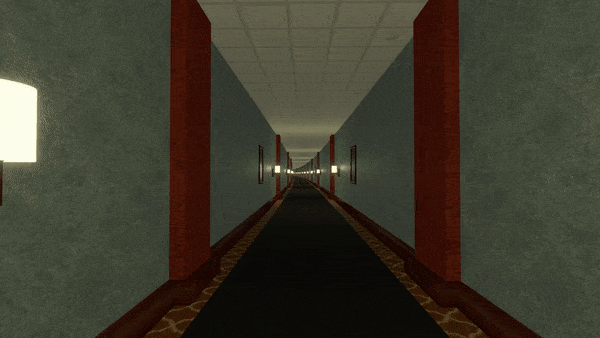
Let’s use an example: One game we played on stream recently, I won’t name it but it has an evocative title that seemed to imply it was an exploration of a specific kind of loss, seeming at first glance to be a story game. The expectation was set, this would be a thematic narrative exploration. But in practice, the game was a series of hallways with some light jumpscares thrown in as we moved from point A to B, some light environmental storytelling that didn’t seem to align with it’s theme in the slightest but was more just “creepy set dressing”, and an end point that consisted of a ghostly reveal but no conclusion to the theme or story initially hinted at. The theming then, seemed an excuse at best, and with it’s barely there narrative, it would be strange to consider this a narratological game. However, you couldn’t frame it as a ludological one either - there were no mechanics, no gameplay loops, no systems of rules to bend and break, no focus on agency at all.
So if it wasn’t designed to tell a story, and it had no real mechanics, what even is it? My first instinct is to class it as a game separate from our narratological or ludologically lens entirely. A game that actually doesn’t care at all about the player. It’s focus not on the player’s experience, or telling a story to the player, but a focus purely on making a game, in of itself. A series of jumpscares. A spooky environment. Designer focused, a coding flex, and the player is secondary at best. The game is an excuse for the developer to make a game, to expand skillsets, to expand their portfolio, etc. And as itch is specifically a platform for that kind of thing, we cant at all deride them for this, and I don’t, but is this what’s really happening? Maybe this isn’t the case at all, maybe it is in fact a narratological game, it just borrows from a different set of rules than we are used to with non-horror narrative focused games. It is borrowing from the storytelling present in horror films - albeit bad ones. Spooky setting, spooky thematics, barely there characters, and an excuse to have a bunch of jumpscares taped to one another over the course of 90 minutes.
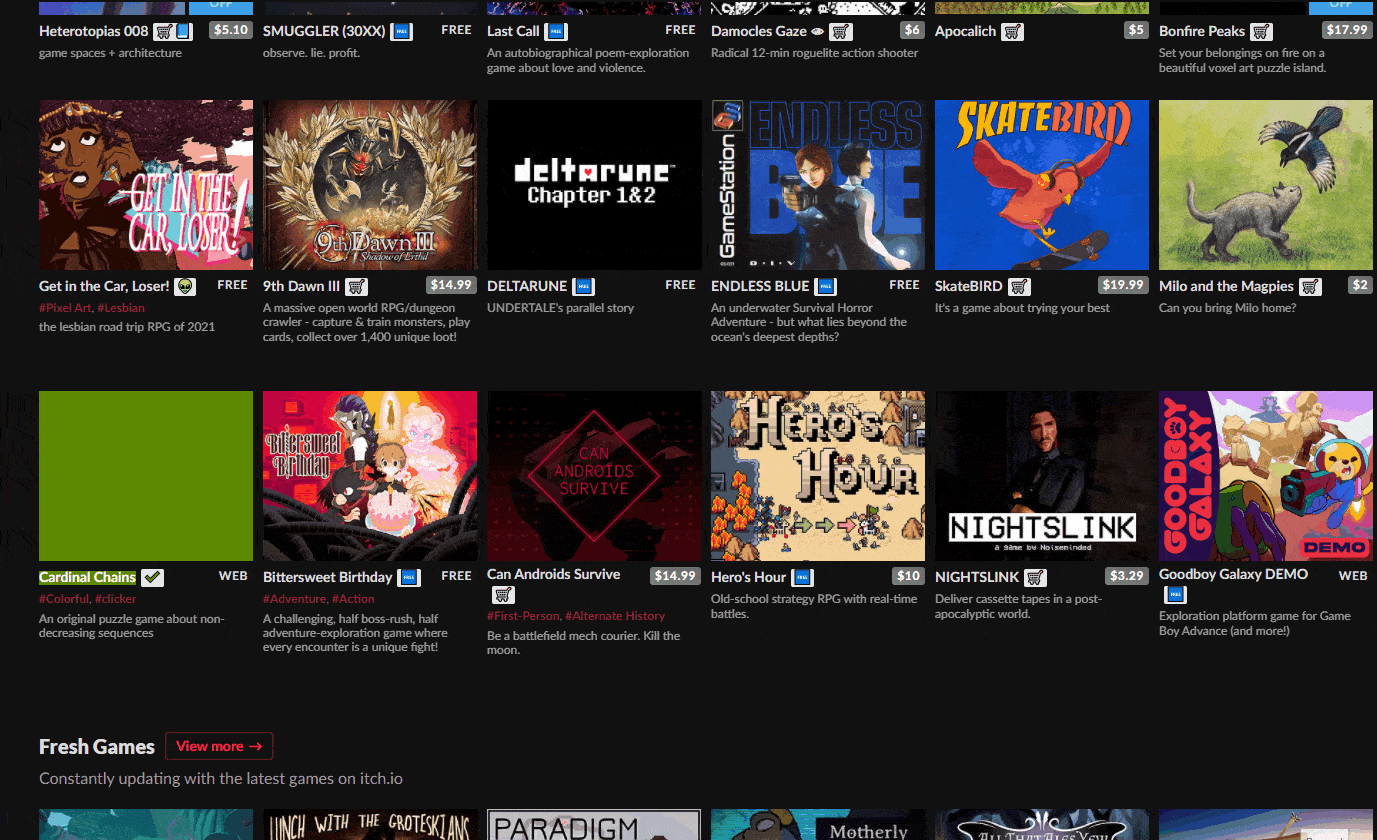
And so I think I have my answer. Why do these indie horror games feel like story games, when the story isn’t a major focus of the game? Why do these walking sim horror house simulators feel so distictly like narratological experiences, when they barely have cutscenes, or characters, or plot? I think it’s that they very much are ‘Invisible’ narrative games, with all the same trappings of a narrative game, just presented more in line with horror narratives over general cinematic narratives. They ignore agency and mechanic and game loop and opt instead for the cutscene stylings of moving from point A to B, only to have the resultant cutscene actually be a jumpscare. And so what is it that makes a horror game stand out as distinctly different to the rest? I think the answer is, as expected, a focus on mechanics. The simple inclusion of a “record the jumpscare” mechanic in a Stanislaw Truchowski game changes the jumpscare from a passive cutscene, to an active mechanic. The inclusion of mundane ‘work’ inspired game loops in a Chilla’s Art game makes it an active experience, and the addition of multiple endings gives that mechanical agency pay off.
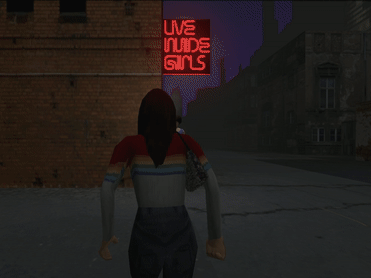
What was the point of all this? Well, partially as mentioned earlier, it was to try and understand my experience with the indie horror games we play so often. And I think mission accomplished there. And partially it was to figure out why my enthusiasm had been waning so much over the last week during development on ‘Mirrors’. Since, as the snow segment greybox has been coming together into a more complete loop, I switched to tweaking, polishing, and fleshing out the progression, and as a result it began to feel more like a finished game. All that was missing, was the narrative through-line, so my focus switched heavily from getting the basic systems to work, to Daphne’s personal story. Why she is in this section of the game. What it means. What the story being told here is, precisely.
In doing so, I started to plot out a single unbranching path through the segment in order to explore this story, and it was easy to get lost in, because the story is one that holds meaning to me. It became an expressive outlet, and once that single path progression was complete, it felt like a complete game. At least, one that I was familiar with playing on Itch. I could start it, play it all the way through, it told a cohesive story, it had tension, build up, and a narrative conclusion - wasn’t that enough?
I often have worked on games until they ‘felt’ ready enough, or complete enough, to just release. Or more likely, actually, I got sick of the project and wanted to move on. And so I started feeling dread as I played the game and felt my interest waning, more and more. And in pushing for completion, I started ignoring the reason we built our systems the way we did in the first place. The procedural environments, the dynamic haunts, the focus on expanding the movement/grab/throw primary mechanics, with the goal of achieving interesting player agency. I got wrapped up in the segment feeling complete, and started to dislike my own creation for some reason I couldn’t pinpoint. A feeling that it sat in the same category as the games we mentioned earlier, the invisible narratological game. Not inherently bad, but not what I wanted from the experience at all.

And it finally hit me this morning, and I don’t even know what it was that triggered it - actually now that I think about it, I do. It was a video on firewatch. I was watching this game and realizing I was doing what it was doing, stringing a path from point A to point B - I had somehow done exactly what I had set out not to. I had put to the side all of the additional pathing that was initially planned, due to the game loop feeling so complete. Falling into the trap of it beginning to feel ‘good enough’ as I got lost in the idea of moving on to another segment of the game. So, how did I fix it?
Well, luckily it’s fairly simple to fix an issue once you know what it is. The systems we’ve discussed here that exist in ‘Mirrors’ have been sort of designed in a dynamic way, I was just getting stuck in a narrative path I built for myself while fleshing out one of the progression paths. In fact, I got so stuck in it, I forgot about the other progression paths entirely. So, in a very Warren Specter approach, the solution is just to ask, how else can the player achieve their goals? And is there a third option, perhaps? Maybe a fourth? And how would those systems interlock? Very quickly the stagnation I was feeling went away, and I’m on to building the second progression path for the snow segment.
The trap of narratology from a design perspective then, for me at least, is getting stuck in your own experience as the designer of the game. The temptation of completion, the good enough - the feeling that it’s a cohesive experience, without considering the player’s agency and the systems at play. The mistaken delusion that you, as the designer, know what the experience should be, start to finish, and placing your game on rails to deliver that set experience. Ignoring the strength of the medium, and falling into the tropes of the genre. It was a brief hiccup, but I thought it was worth exploring and verbalizing, since I haven’t seen much discussion on it from this perspective. Now on to fleshing out the other progression paths, and trying to avoid the trap yet again.